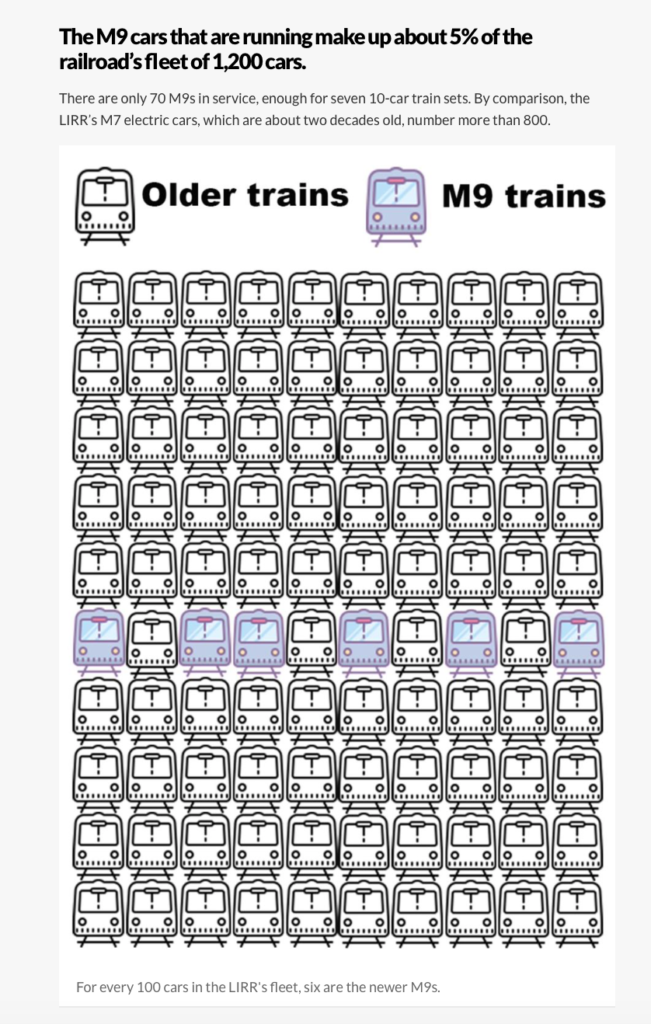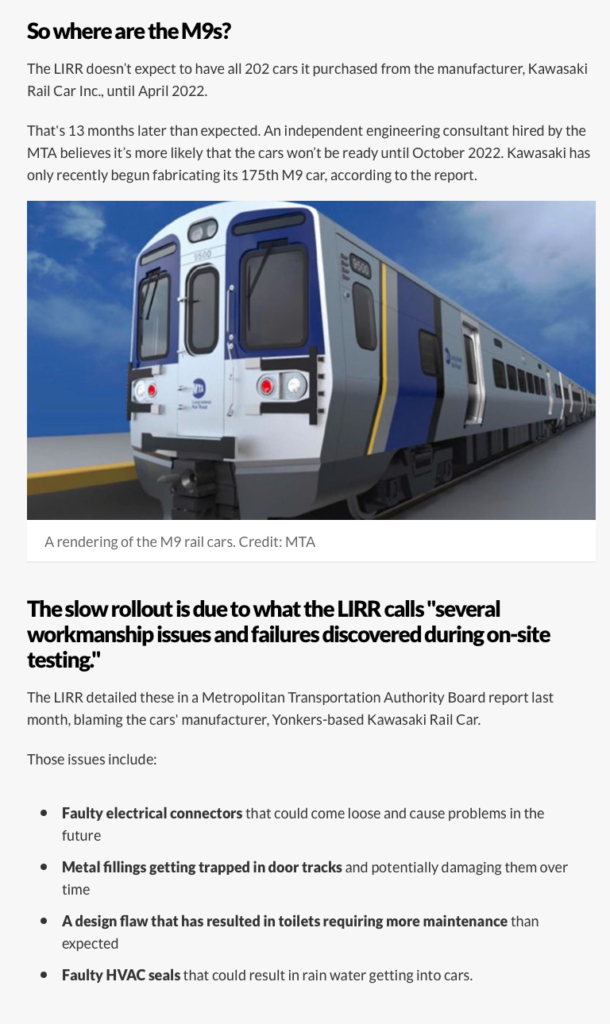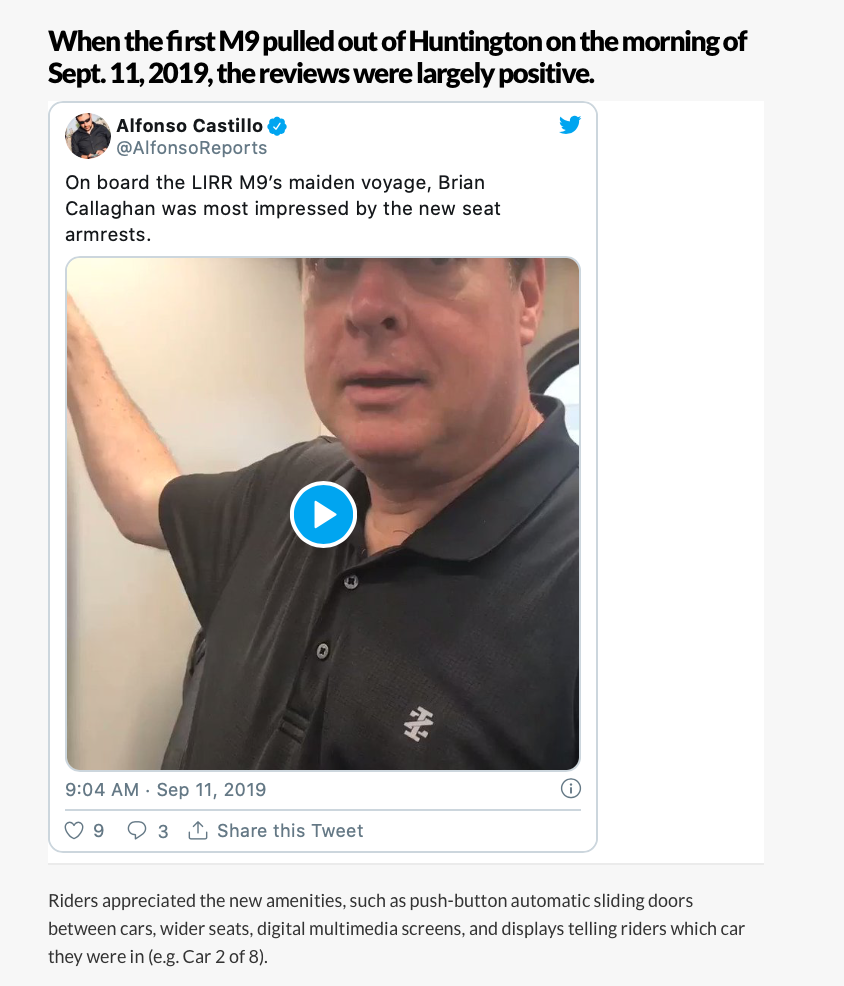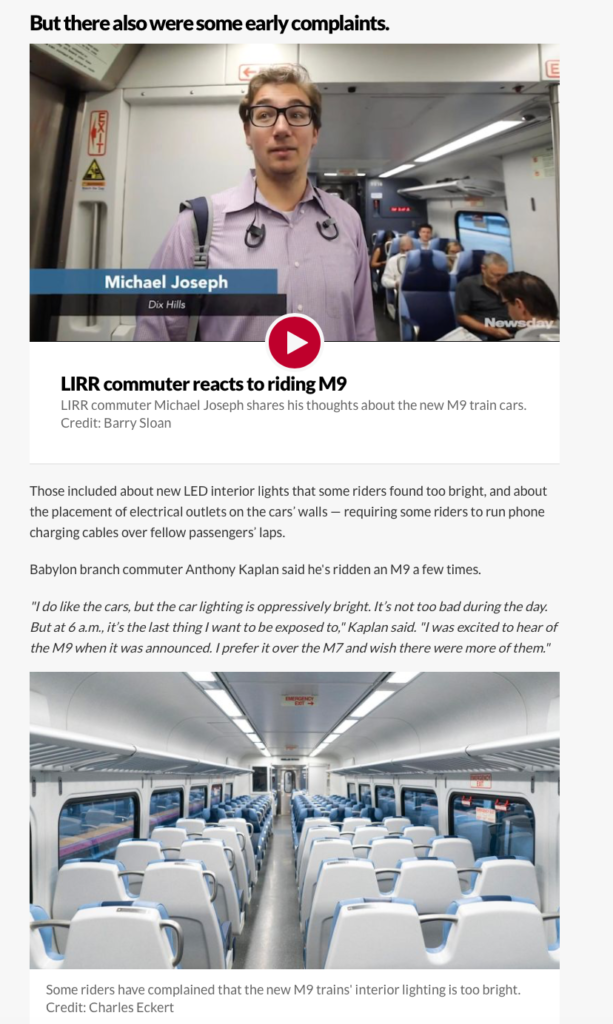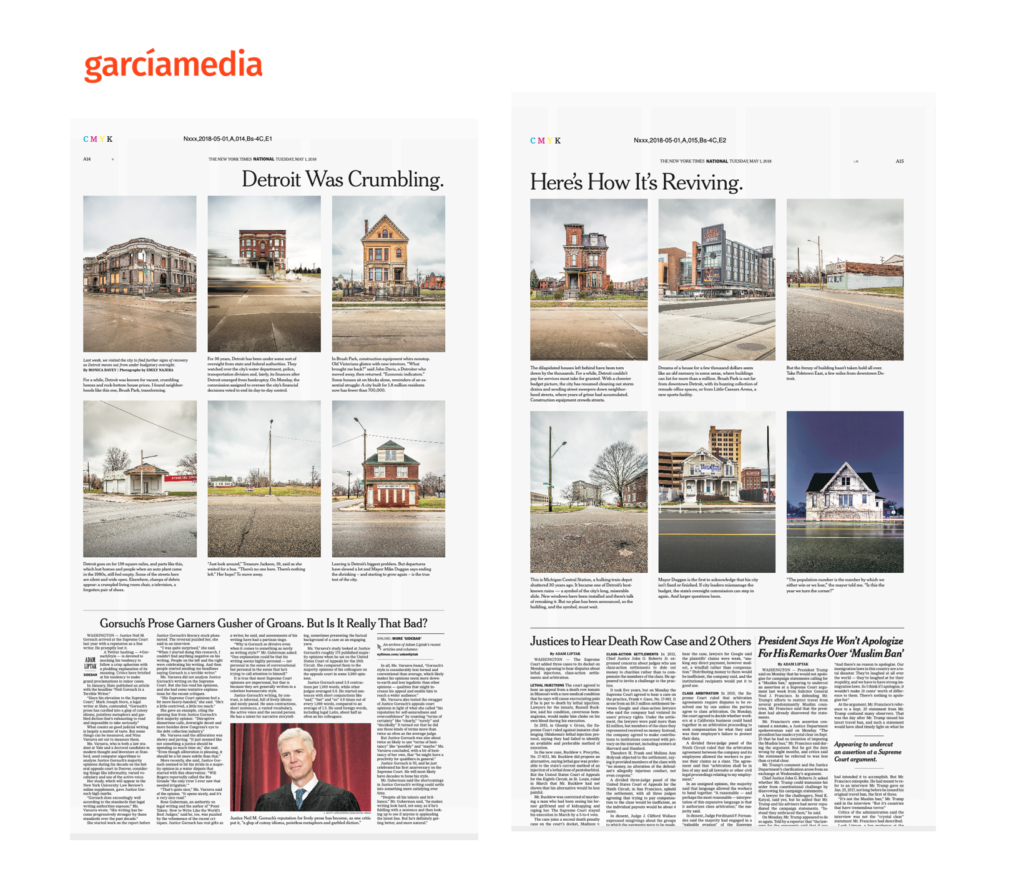This was a story that Newsday, the regional Long Island, New York, newspaper published this weekend.
Why they all it the Unicorn?: It is all about a new train car that has been much awaited by commuters from Long Island to New York City on the Long Island Railroad. However, the new cars have had a shaky debut, prompting many to wonder if they will ever be lucky enough to ride on one.
Coaching of a linear story: I am honored to work with the talented team of Newsday as they plan more systematic publishing of linear stories for mobile. This is a story that we worked on together, via Zoom, of course. And what great job the team has accomplished here.

Here is a link to the story:
https://www.newsday.com/long-island/transportation/mta-m9-trains-delay-1.50153043
Segmentation of content: From the start of our discussions we realized that this would be an ideal story to break into segments, each with its own subhead and deck. The concept of segmentation works by mobile screens, each having its own visual elements, advancing the story one screen at a time. Here are the sketches I created to explain the concept to the team:

Creating a common visual language: This is key, to use typographic and color palette elements that tie the story together visually across platforms.
Developing an outline that shows where visual assets go: We have a tendency to outline stories in narrative format. For more effective visual storytelling, you do a “storyboard” type of outline as seen here:


Here are various “segments” from the Newsday story:
Taking those mobile segments to print: I believe we can use the segments created for the linear, mobile story to the printed pages of the newspaper. We will see more migration of some mobile strategies to print, not only facilitating production, but also bringing less dense presentation of text for selected stories. This Newsday story lends itself well to such transfer as we see here:
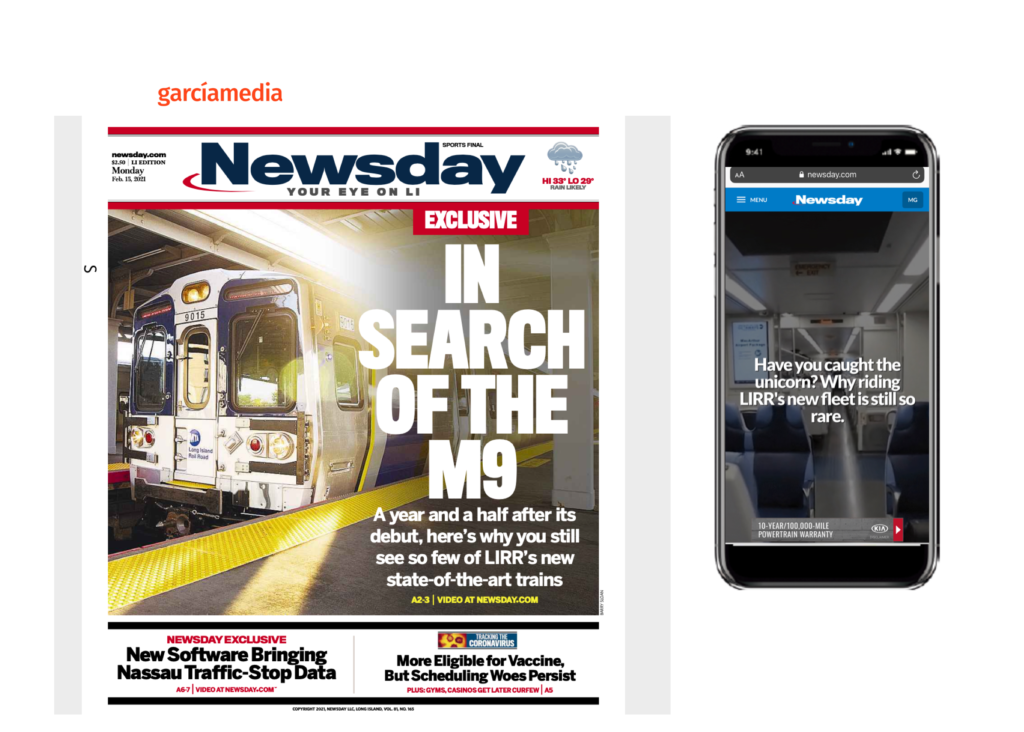
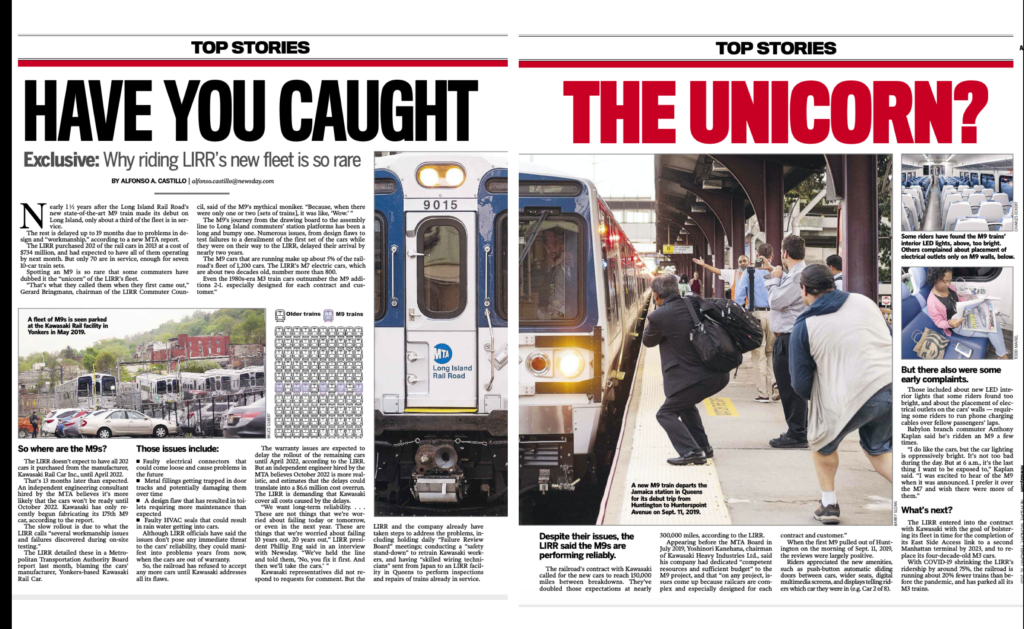
Migrating mobile concepts to print: We are beginning to see more of this process taking place, as shown in this New York Times example: first the mobile version, then how it migrated as two pages for print edition.
https://www.nytimes.com/interactive/2018/04/30/us/detroit-come-back-budget.html

Inquire about our mobile storytelling workshops!
Every week I bring my mobile storytelling workshop to a different newsroom around the world. I begin with a 90-minute presentation about the essentials of crafting/editing/designing stories for mobile consumption. Then I break the participants into groups and for two hours they produce a mobile story which they then present to the entire group for evaluation. It works all the time.
Another type of Garcia Media program is when we sign up for mobile storytelling coaching after completion of the first workshop. Once a week, or as planned, I work virtually with a team of reporters, editors, designers on actual stories that will be published as linear mobile stories. Let me know if you are interested in more information: mario@garciamedia.com
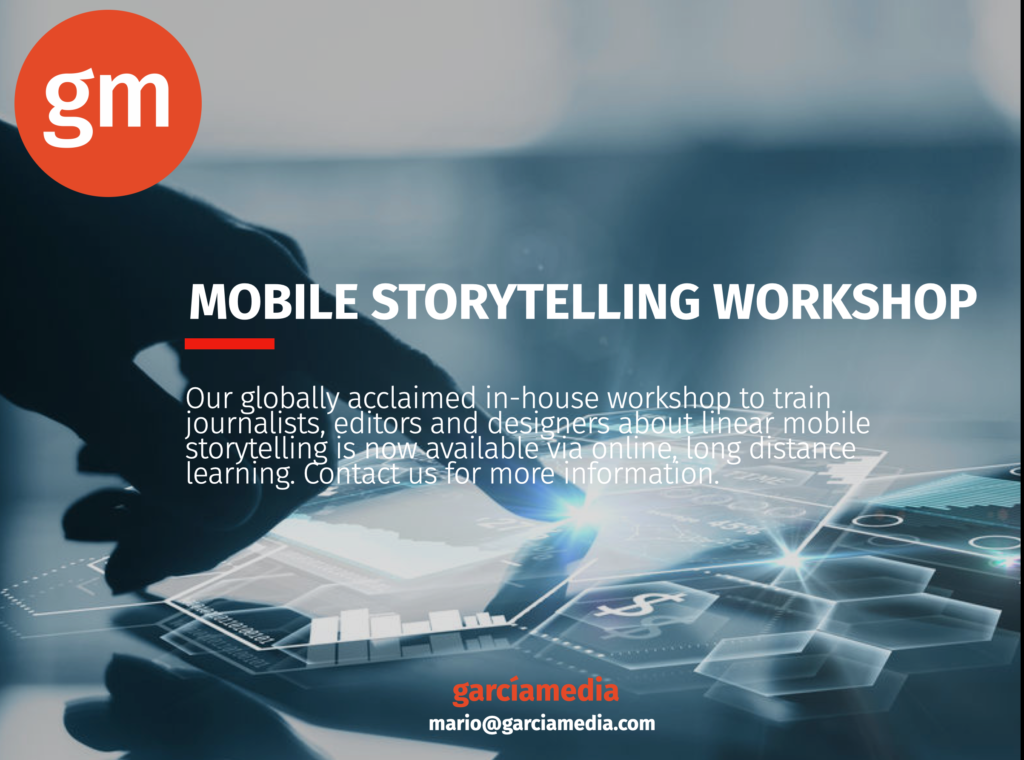
Professors: get your review version of The Story on time for fall classes
As an academic, I know the importance of having the right tools to advance our students, especially on the important subject of mobile storytelling. Please drop me an email if you would like to sample The Story in its digital edition: mario@garciamedia.com
Start writing or type / to choose a block
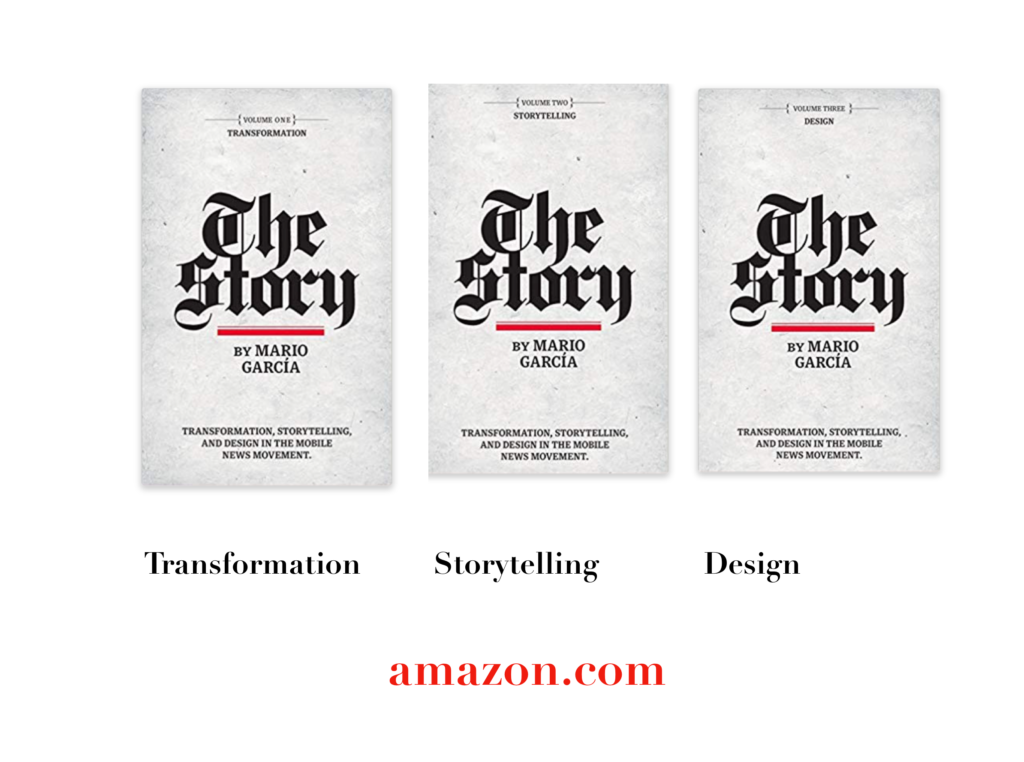
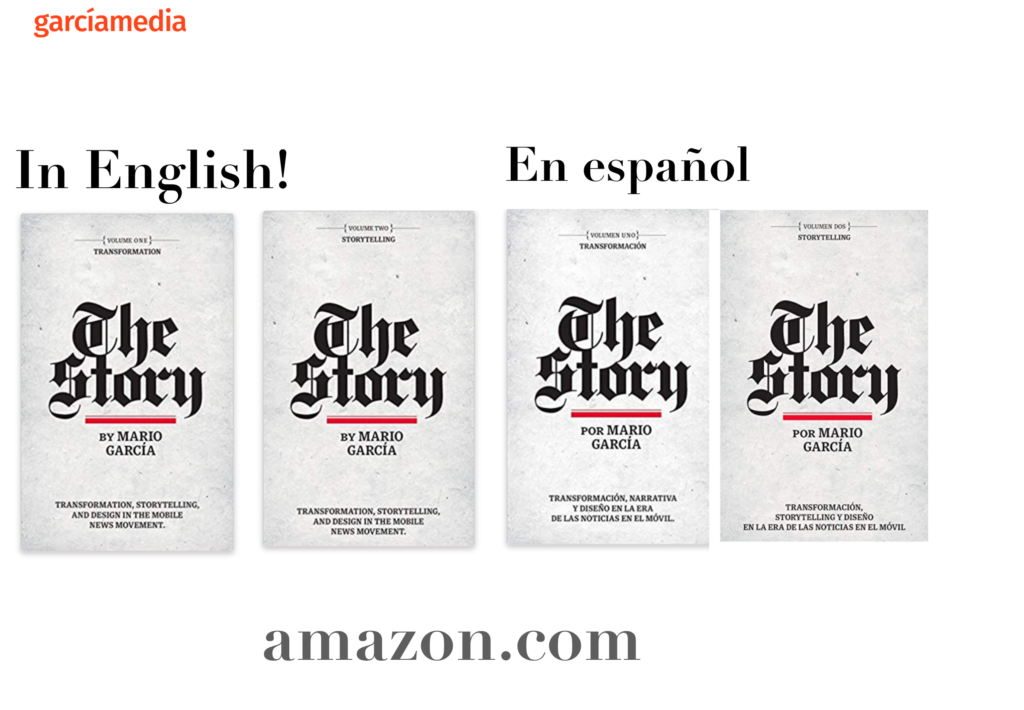
The full trilogy of The Story now available–3 books to guide you through a mobile first strategy. Whether you’re a reporter, editor, designer, publisher, corporate communicator, The Story is for you! https://amazon
TheMarioBlog post # 3275
